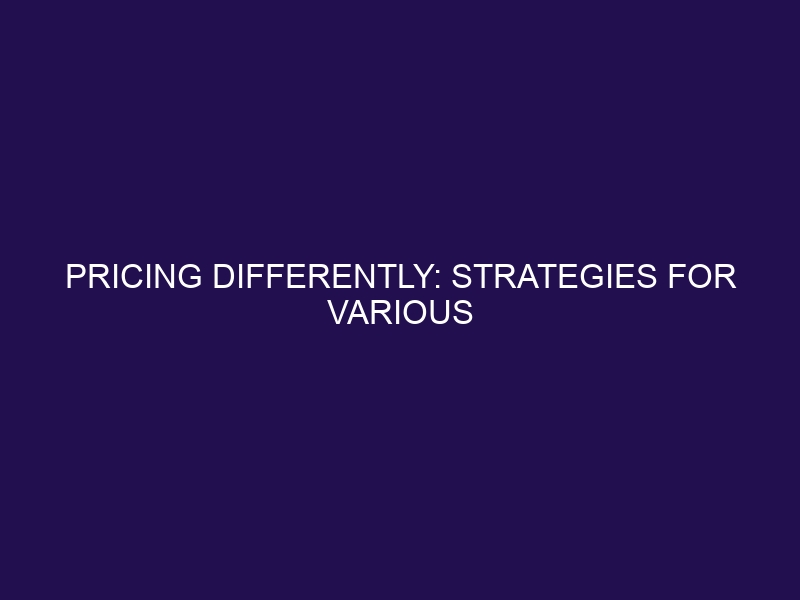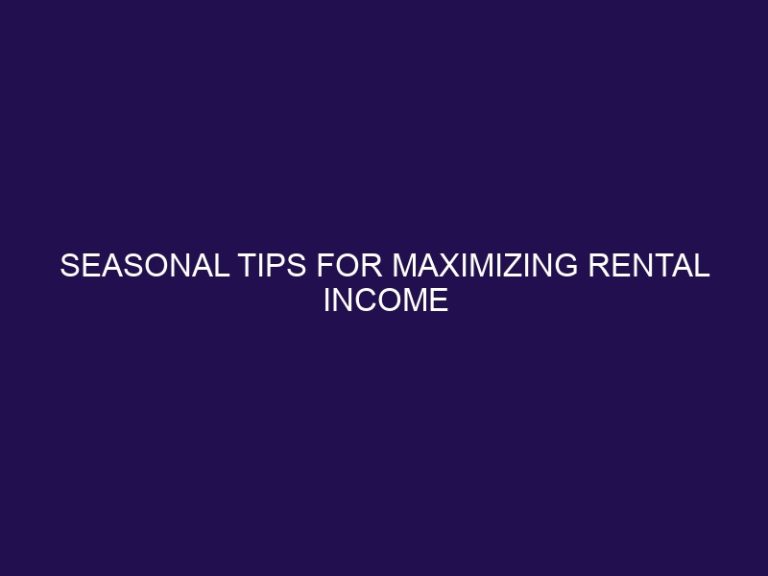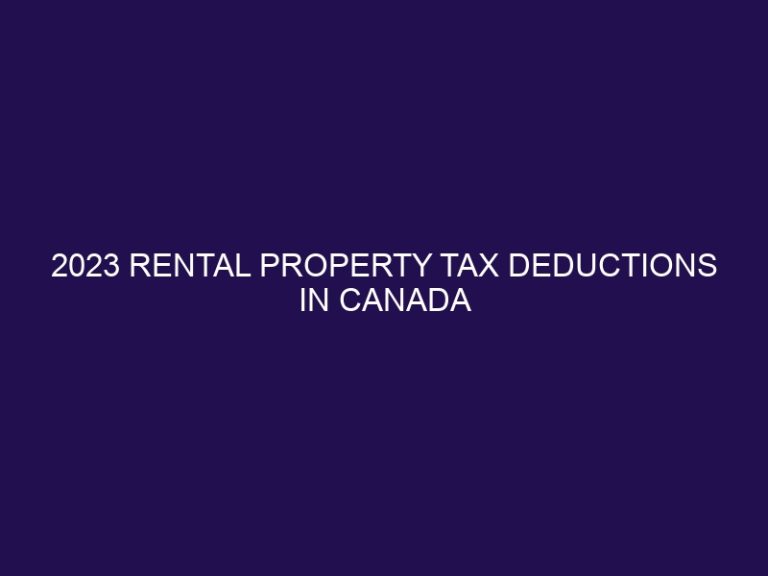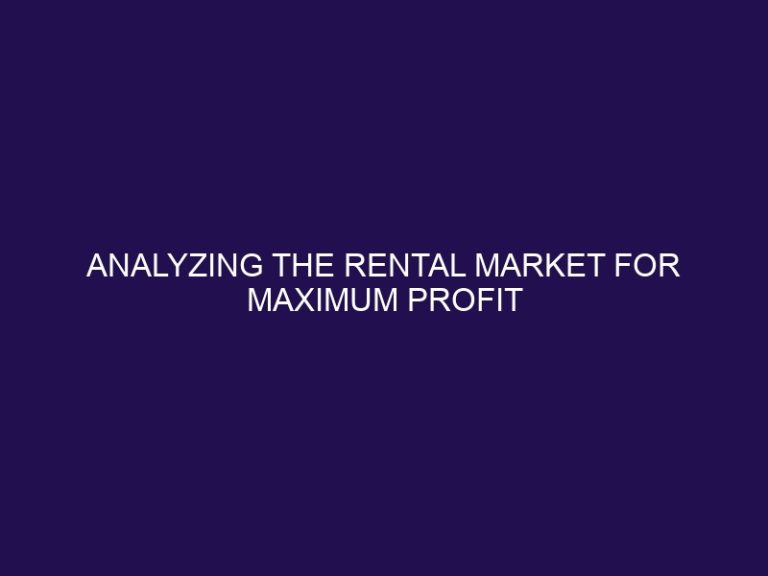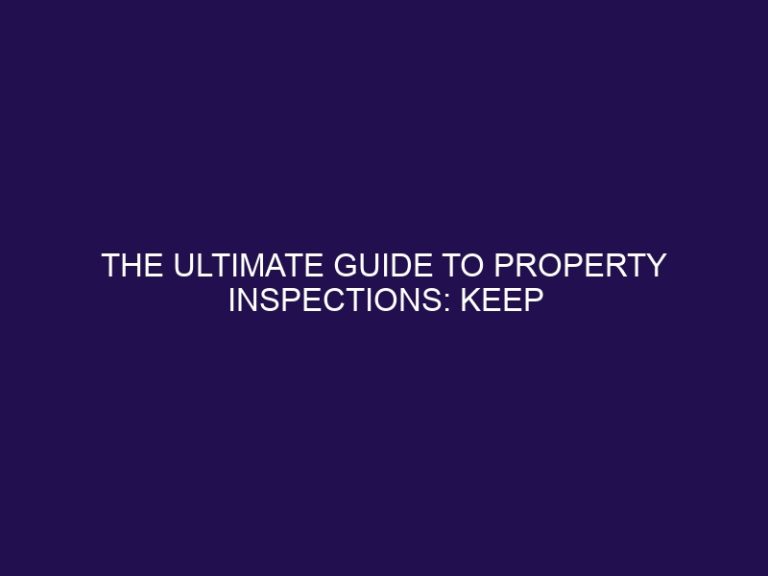Pricing Differently: Strategies for Various Property Types
Pricing a property is a crucial aspect of real estate that significantly impacts the success of a sale or lease. However, the pricing strategies for different property types may vary based on their characteristics, market demand, and competition. Understanding these differences and implementing effective pricing strategies can help maximize profits and attract potential buyers or tenants.
There are four primary types of properties: residential, commercial, industrial, and agricultural. Residential properties are designed for people to live in, while commercial properties are utilized for business purposes. Industrial properties are used for manufacturing, warehousing, and distribution, and agricultural properties are used for farming and raising livestock.
Pricing strategies for each of these property types may differ based on their purpose, location, and market demand. For residential properties, the most common pricing strategies are the market value approach, cost approach, and income approach. The market value approach considers the selling prices of similar properties in the area to determine an accurate value. The cost approach takes into account the construction and land costs to determine the property’s value, while the income approach considers the potential income from renting out the property.
Commercial properties are usually priced using gross lease, net lease, or percentage lease strategies. Gross lease involves a fixed rent amount, while net lease includes additional expenses such as taxes and maintenance. Percentage lease involves a base rent plus a percentage of the tenant’s sales.
Industrial properties may be priced using cost-plus pricing, market-oriented pricing, or competition-based pricing. Cost-plus pricing involves adding a profit margin to the property’s production cost. Market-oriented pricing considers the market demand and competition in the area, while competition-based pricing involves setting the price to match or beat the prices of similar properties.
For agricultural properties, the most common pricing strategies are crop share leases, cash rent leases, and flexible cash rent leases. Crop share leases involve sharing the cost and profits of farming between the landowner and tenant. Cash rent leases involve a fixed rent amount paid by the tenant, and flexible cash rent leases consider the yield and market prices of crops.
When pricing any type of property, factors such as location, property condition, market demand, and competition should be carefully considered. Understanding the unique characteristics and market demand for each property type is essential in implementing effective pricing strategies that can lead to successful sales or leases.
Understanding Different Property Types
When it comes to buying or selling property, it’s important to understand the nuances of different property types. Each type of property requires a unique approach when it comes to pricing and negotiating. In this section, we will explore the four main categories of properties: residential, commercial, industrial, and agricultural. By understanding the key differences between these property types, you can make more informed decisions when it comes to pricing strategies. So let’s dive into the intricacies of each type and how they can impact the buying and selling process.
1. Residential Properties
- Understand the different types of residential properties, including apartments, condominiums, and single-family homes.
- When evaluating residential properties, consider factors such as location, amenities, and neighborhood.
- It is important to analyze market trends and property condition in order to determine accurate pricing for residential properties.
2. Commercial Properties
- Understand the various types of commercial properties, including retail, office, and industrial.
- Assess the foot traffic, accessibility, and surrounding businesses in the location.
- Analyze the property’s zoning regulations and potential for future development.
Pro-tip: Consider the visibility and branding opportunities of the property to attract potential tenants.
3. Industrial Properties
- Be knowledgeable about the specific zoning regulations for 3. industrial properties.
- Consider the property’s proximity to transportation hubs and logistical advantages.
- Evaluate the available infrastructure and utility provisions.
Did you know? Specialized environmental assessments for compliance are often required for industrial properties.
4. Agricultural Properties
Agricultural properties frequently implement various pricing strategies such as:
- crop share leases
- cash rent leases
- flexible cash rent leases
The pricing of these properties is influenced by factors such as:
- location
- property condition
- market demand
- competition
Pricing Strategies for Residential Properties
When it comes to pricing residential properties, there are various strategies that can be utilized to determine the value. In this section, we will take a closer look at the different approaches that are commonly used: the market value approach, the cost approach, and the income approach. Each approach takes into consideration different factors and can lead to different pricing outcomes. By understanding these strategies, property owners and buyers can make informed decisions about the pricing of residential properties.
1. Market Value Approach
- Utilize the Market Value Approach by inspecting recent sales of similar properties.
- Assess the features and condition of the property.
- Analyze market trends and economic conditions to determine the market value.
- Consider the location and demand in the market value assessment.
2. Cost Approach
The cost approach has been a crucial method in real estate valuation since the early 20th century, providing accurate property value assessments.
Steps:
- Identify the property’s replacement cost using the cost approach.
- Deduct any accrued depreciation.
- Add the estimated land value to the replacement cost.
3. Income Approach
- Estimate potential income from the property.
- Calculate operating expenses.
- Determine the capitalization rate.
- Apply the Income Approach formula: value = net operating income / capitalization rate.
Pricing Strategies for Commercial Properties
When it comes to commercial properties, pricing strategies can vary greatly depending on the type of property. In this section, we will discuss the different approaches to pricing commercial properties and the advantages and disadvantages of each. From the traditional gross lease to the more complex percentage lease, we will explore the nuances of each pricing strategy and how they can impact both the property owner and tenant. Stay tuned to learn more about the intricacies of pricing commercial properties.
1. Gross Lease
- Gross Lease: Tenant pays a set amount to the landlord, which covers operating expenses like taxes, insurance, and maintenance.
- Landlord’s Responsibility: Covers operating expenses like taxes, insurance, and maintenance.
- Pass-Through Costs: Tenants may reimburse the landlord for additional costs.
2. Net Lease
- Net Lease: A type of lease in which the tenant pays the base rent as well as property expenses such as taxes, insurance, and maintenance.
3. Percentage Lease
- Determine Base Rent: Calculate the fixed amount paid regularly.
- Establish Percentage Lease: Decide on the percentage of sales revenue paid as rent.
- Account for Breakpoints: Identify sales thresholds triggering percentage rent adjustments.
- Define Reporting Requirements: Outline financial reporting obligations for the tenant.
Pricing Strategies for Industrial Properties
When it comes to industrial properties, there are various pricing strategies that can be used to maximize profits and attract potential buyers or tenants. In this section, we will discuss the three main pricing strategies for industrial properties: cost plus pricing, market-oriented pricing, and competition-based pricing. By understanding the differences between these strategies, property owners and managers can make informed decisions about which approach will be most effective for their specific property type.
1. Cost Plus Pricing
- Determine direct costs: Calculate the expenses directly associated with the property.
- Add markup: Apply a predetermined percentage to cover indirect costs and profit margin.
- Set final price: Sum the direct costs and markup to establish the selling price.
Consider market conditions and cost efficiency when implementing Cost Plus Pricing.
2. Market-Oriented Pricing
Market-oriented pricing is a strategy that centers on establishing property prices based on current market rates. This approach involves studying comparable properties in the market to determine competitive pricing. The price of a property is heavily influenced by factors like location and demand when using market-oriented pricing for various property types.
3. Competition-Based Pricing
- Analyze comparable properties to determine the level of competition in the market.
- Assess their pricing strategies and make necessary adjustments to your own pricing.
- Consider your property’s unique selling points to set it apart from others in the market.
- Regularly monitor market changes and adjust your pricing accordingly.
Pricing Strategies for Agricultural Properties
When it comes to pricing agricultural properties, there are several strategies to consider. In this section, we will discuss the three main types of leases commonly used for agricultural properties: crop share leases, cash rent leases, and flexible cash rent leases. Each of these strategies offers unique advantages and considerations for both the landowner and the tenant. By understanding the differences between these pricing methods, you can make an informed decision on which one would best suit your needs.
1. Crop Share Leases
- Landowner and farmer agree to split the production and expenses of the crop.
- Farmers pay their share of input costs and receive a portion of the harvest as per the crop share lease agreement.
- The proportions may vary based on the agreement, offering both parties a stake in the success of the crop.
Although crop share leases have ancient roots, they continue to be relevant in modern agriculture, promoting collaborative relationships between landowners and farmers.
2. Cash Rent Leases
Cash rent leases are commonly used in agricultural properties and involve a fixed rental amount. For example, a farmer may agree to pay $100 per acre annually to lease a piece of farmland. This type of lease offers stability for both the landlord and tenant, making financial planning simpler for both parties.
3. Flexible Cash Rent Leases
- Gain a thorough understanding of the concept of flexible cash rent leases, which allow for adjustments based on crop prices or yield.
- Negotiate terms that can accommodate market fluctuations, ensuring fair agreements for both parties involved.
- Be sure to clearly document any flexibility clauses in the lease contract.
Factors to Consider when Pricing Properties
When it comes to pricing properties, there are several factors that must be taken into consideration. These factors can vary based on the type of property being priced, such as residential, commercial, or vacation properties. In this section, we will discuss the key considerations that should be made when determining the price of a property. From the location and condition of the property to the current market demand and competition, each factor plays a critical role in the pricing strategy. By understanding these factors, property owners can make informed decisions to maximize their profits.
1. Location
- When considering a property, take into account its proximity to amenities and facilities.
- Evaluate the safety and security of the neighborhood.
- Analyze the accessibility and connectivity of the area.
Did you know? The location of a property can significantly impact its value, with prime locations often commanding higher prices.
2. Property Condition
- Inspect: Evaluate the structural integrity, plumbing, and electrical systems to assess the property’s condition.
- Maintain: Regularly address maintenance needs to uphold the value of the property.
- Clean: Ensure a tidy and well-kept appearance both inside and outside the property to maintain its condition.
A stately Victorian home in London underwent meticulous restoration, preserving its original charm while modernizing its amenities, attracting numerous potential buyers interested in the property’s excellent condition.
3. Market Demand
- Understand the current market demand for similar properties in the area.
- Analyze the trends and patterns in property sales and rentals to gauge market demand.
- Consider economic indicators and population shifts that may influence property demand.
Pro-tip: Research local economic development plans to anticipate future market demand trends.
4. Competition
Competing in the property pricing market requires a thorough understanding of local market forces, property condition, and demand. To excel in the competitive market, it is important to conduct thorough comparative market analyses, offer attractive incentives, and leverage unique selling points to differentiate your property.
Frequently Asked Questions
What is the role of price in selling a home?
Price is a crucial factor when selling a home, as it can greatly impact the success of the sale. A well-priced home can attract more buyers and potentially lead to a higher profit for the seller, while a poorly-priced home may sit on the market for an extended period.
What are the three main pricing strategies for real estate?
The three main pricing strategies for real estate are aspirational pricing, market value pricing, and below-market pricing. Each strategy has its own unique benefits and potential downsides, so it’s important to carefully consider which one is best for your property type and local market conditions.
How does aspirational pricing work?
Aspirational pricing is a strategy that creates a sense of exclusivity and scarcity for properties, making them more attractive to buyers. It can be effective for attracting luxury or exclusive property buyers, but it can also backfire if the property remains on the market for too long.
What is market value pricing and when is it recommended?
Market value pricing is a more traditional approach, where the price is based on the current market conditions and comparable properties. This strategy is recommended for a more balanced market, where there is less competition among buyers. It can also be used to attract serious buyers who are looking for a fair price.
When is below-market pricing a viable strategy?
Below-market pricing is a strategy used to quickly sell a property, typically in a buyer’s market with limited inventory and decreasing sales activity. By pricing the property below its market value, it can attract multiple offers and create a sense of urgency among buyers. However, it can also result in a lower profit for the seller.
How can a comparative market analysis (CMA) help determine the right price for a property?
A comparative market analysis (CMA) involves evaluating the prices of comparable properties in the local market to determine a fair and competitive price for a property. This can help sellers find the “sweet spot” between a competitive price and maximizing profits.

